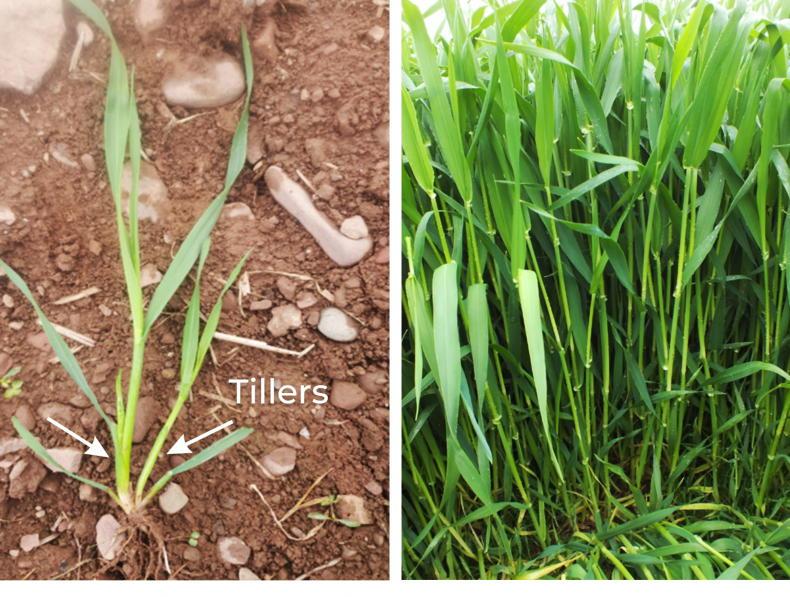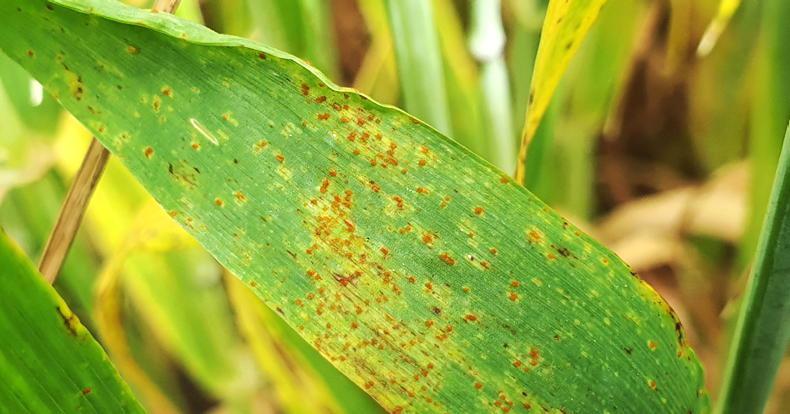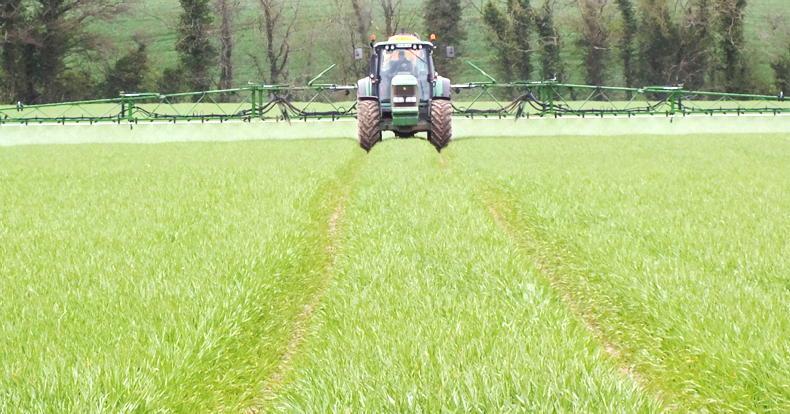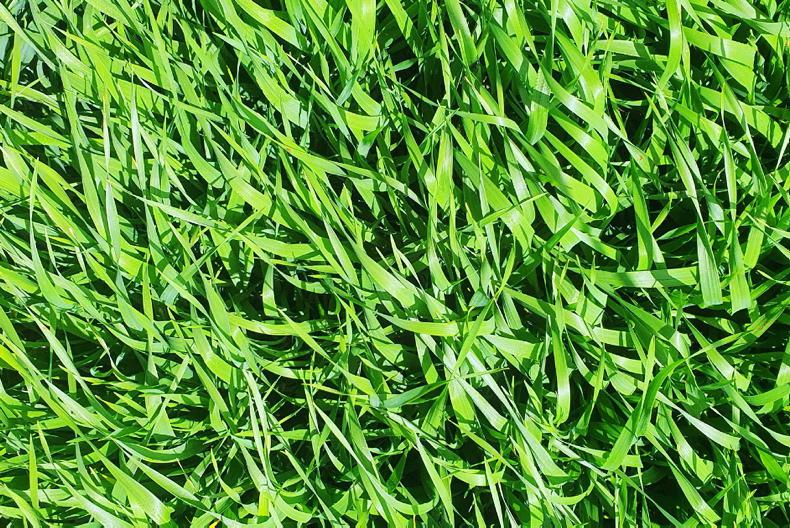The 2023 spraying season is upon us. Syngenta’s Billy Cotter outlines some of the important imminent spraying tasks, while Tom Gartland reminds us of the key sprayer settings to optimise performance and minimise drift.
It has been a tough winter and spring on autumn-sown cereal crops. Prolonged wet spells have not been kind to crops, but rising temperatures and the recent spell of slightly more favourable weather are driving crops forward.
Winter barley and oats are approaching growth 31/32 and wheat is at or around growth stage 31. These growth stages are triggers for some key spray applications.
Wild oats
Wild oats in winter wheat or barley that have not already been treated should be the number one priority now, according to Billy Cotter, Syngenta Ireland.
“Wild oats are better controlled at earlier growth stages. It is important to get herbicides, like Axial Pro, on to the tillers before crop shading becomes an issue.
“Avoid spraying when the wild oats are not growing actively, keep to recommended rates and follow sequencing guidelines around broadleaf herbicides to get best results,” Billy advised.

It is important to get Axial Pro on to the tillers of the wild oats and to spray early before the crop canopy shades the weeds
PGRs – best use advice
All plant growth regulators (PGRs) work best on unstressed, actively growing crops. It is best to avoid spraying when daytime and nighttime temperatures are fluctuating significantly.
“We’ve seen at this time of year where daytime temperatures rise to low 20 degrees centigrade and fall to low single figures at night.
"These temperature swings are rare, but should be avoided when applying any PGRs, as they can lead to over-regulation or over-shortening of crops.
"It is also better to minimise the number of products in the tank. If these guidelines are followed, Moddus is very kind to crops,” explained Billy.
Winter barley disease
Brown rust and mildew are commonly reported in barley crops at the moment, advised Billy. Neither are the most difficult diseases to control, but it does underline the importance of using truly broad spectrum fungicides at this early timing.
“Elatus Era is a great option for the first fungicide on barley, as it contains prothioconazole and the SDHI, SOLATENOL™.
"This combination of active ingredients delivers a high level of control of the traditional diseases like rhynchosporium and net blotch and will also deal with brown rust and the levels of mildew being seen in crops at present,” Billy said.

Use a broad spectrum fungicide such as Elatus Era to control brown rust and other diseases this season.
Wheat
Predictably, septoria is the most visible disease in wheat crops, though there are also reports of yellow rust. Yellow rust is a disease that can suddenly appear and quickly establish if not factored into fungicide programmes.
“T1 is a key timing for controlling both septoria and yellow rust. Elatus Era’s profile on wheat – strong on septoria and the best available on yellow rust - will fit the bill on many crops this year.
"Always add the multisite Folpet (Mirror) at T1 to provide additional activity against septoria and to slow the rate of resistance development,” concluded Billy.
Sprayer set-up - top tips
Tom Gartland knows more about sprayer set-up than most. Years of trials and field work looking at nozzle choice, boom height, forward speed and other variables have shaped his thoughts on optimising performance and minimising drift. These are his top three tips.
1) Use drift reducing nozzles. Drift reducing nozzles are more accurate, allow for more spraying opportunities in catchy weather and, of course, minimise spray drift into the environment.
2) Boom height should be set at 0.5 metres above the spray target. Too often, we see sprayers operating at boom heights above this. This leads to poor spray deposition on the target and excessive drift – a waste of spray and environmental contamination.
3) Drive at an appropriate forward speed. Boom stability is critical to accurate spray application. A boom that is bouncing is not delivering even coverage. Forward speed must be matched to the terrain and the stability aids, if any, on the sprayer. It is always better to go too slow rather than too fast.

Getting the boom height correct is the most important sprayer setting.
For further information, please click HERE.
The 2023 spraying season is upon us. Syngenta’s Billy Cotter outlines some of the important imminent spraying tasks, while Tom Gartland reminds us of the key sprayer settings to optimise performance and minimise drift.
It has been a tough winter and spring on autumn-sown cereal crops. Prolonged wet spells have not been kind to crops, but rising temperatures and the recent spell of slightly more favourable weather are driving crops forward.
Winter barley and oats are approaching growth 31/32 and wheat is at or around growth stage 31. These growth stages are triggers for some key spray applications.
Wild oats
Wild oats in winter wheat or barley that have not already been treated should be the number one priority now, according to Billy Cotter, Syngenta Ireland.
“Wild oats are better controlled at earlier growth stages. It is important to get herbicides, like Axial Pro, on to the tillers before crop shading becomes an issue.
“Avoid spraying when the wild oats are not growing actively, keep to recommended rates and follow sequencing guidelines around broadleaf herbicides to get best results,” Billy advised.

It is important to get Axial Pro on to the tillers of the wild oats and to spray early before the crop canopy shades the weeds
PGRs – best use advice
All plant growth regulators (PGRs) work best on unstressed, actively growing crops. It is best to avoid spraying when daytime and nighttime temperatures are fluctuating significantly.
“We’ve seen at this time of year where daytime temperatures rise to low 20 degrees centigrade and fall to low single figures at night.
"These temperature swings are rare, but should be avoided when applying any PGRs, as they can lead to over-regulation or over-shortening of crops.
"It is also better to minimise the number of products in the tank. If these guidelines are followed, Moddus is very kind to crops,” explained Billy.
Winter barley disease
Brown rust and mildew are commonly reported in barley crops at the moment, advised Billy. Neither are the most difficult diseases to control, but it does underline the importance of using truly broad spectrum fungicides at this early timing.
“Elatus Era is a great option for the first fungicide on barley, as it contains prothioconazole and the SDHI, SOLATENOL™.
"This combination of active ingredients delivers a high level of control of the traditional diseases like rhynchosporium and net blotch and will also deal with brown rust and the levels of mildew being seen in crops at present,” Billy said.

Use a broad spectrum fungicide such as Elatus Era to control brown rust and other diseases this season.
Wheat
Predictably, septoria is the most visible disease in wheat crops, though there are also reports of yellow rust. Yellow rust is a disease that can suddenly appear and quickly establish if not factored into fungicide programmes.
“T1 is a key timing for controlling both septoria and yellow rust. Elatus Era’s profile on wheat – strong on septoria and the best available on yellow rust - will fit the bill on many crops this year.
"Always add the multisite Folpet (Mirror) at T1 to provide additional activity against septoria and to slow the rate of resistance development,” concluded Billy.
Sprayer set-up - top tips
Tom Gartland knows more about sprayer set-up than most. Years of trials and field work looking at nozzle choice, boom height, forward speed and other variables have shaped his thoughts on optimising performance and minimising drift. These are his top three tips.
1) Use drift reducing nozzles. Drift reducing nozzles are more accurate, allow for more spraying opportunities in catchy weather and, of course, minimise spray drift into the environment.
2) Boom height should be set at 0.5 metres above the spray target. Too often, we see sprayers operating at boom heights above this. This leads to poor spray deposition on the target and excessive drift – a waste of spray and environmental contamination.
3) Drive at an appropriate forward speed. Boom stability is critical to accurate spray application. A boom that is bouncing is not delivering even coverage. Forward speed must be matched to the terrain and the stability aids, if any, on the sprayer. It is always better to go too slow rather than too fast.

Getting the boom height correct is the most important sprayer setting.
For further information, please click HERE.









 This is a subscriber-only article
This is a subscriber-only article





